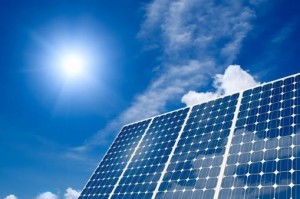Shift from concentrated solar power to photovoltaic inexorable now

Several proposed big solar projects, including one in California, have switched from concentrated solar power (CSP) to the more familiar photovoltaic (PV). The trend now seems irreversible. Photovoltaic will now be the dominant technology used for big solar plants. CSP, with one notable exception, is losing out everywhere.
CSP reflects the heat of the sun off parabolic mirrors to a central tower where it creates steam to power turbines and thus create electricity. Its big advantage is that excess heat can be stored, often in molten salt, to be used to create power when the sun isn’t shining. But it has one big technological drawback. It needs water, lots of it and in deserts too. Obviously this puts CSP up against all the other interests competing for scarce desert water. Some CSP plants recycle water. This does decrease consumption, but still uses substantial amounts of water.
The other challenge CSP faces is the disruptive technology of solar photovoltaic. The PV market is competitive. Prices are plunging and will continue to do so. CSP used to be cost-competitive against PV but no longer is. It’s difficult to see how it ever will be again. Plus, PV uses way less water than CSP, which is another significant factor in its favor.
The recently approved Sonoran Solar Energy project in Arizona decided against using CSP and will now use PV. The proposed Blythe Solar Power Project in California has also decided to switch from CSP to PV. This was a huge loss of business for German solar giant Solar Millennium and probably a contributing factor in its recent filing for bankruptcy. The Blythe plant was supposed to be the first 1 GW solar plant in the world, but the switch to PV will slow development. Instead, a South Africa project may be first. Construction at Blythe has temporarily been suspended until right-of-way issues are resolved. It received $2.1 billion in loans from the federal government in 2011 but that’s not nearly enough for the entire project. I’m not able to determine if the loan is still valid after the project switched to PV.
Solar Millennium was the second German solar company to file for bankruptcy. Solon was the first. Germany has been a world leader in solar but these two bankruptcies have plunged their solar industry into chaos. Relentless competition and price-cutting from Chinese solar companies powered by government subsidies are the driving factors in the PV market now. Even Germany is no longer immune from what some say is Chinese dumping of PV at below cost prices.
There is one project that is still ostensibly committed to concentrated solar power, however. That is the behemoth Desertec Project which plans to install enormous amounts of CSP in North Africa and the Middle East, and use it to power Europe. Siemens, one of its backers, says it is still backing CSP. But Solar Millennium was to be its provider so it’s difficult to see where its CSP technology will come from now. Also, as an aside, Desertec has been remarkably tone-deaf in partnering with, or even involving in discussions those countries where it plans to install the solar. It may well be that political problems sink this project (if water issues don’t). After all, Desertec solar plants will use spectacular amounts of water in some of the driest areas on the planet.
If Desertec gives up on CSP, then it is effectively dead as a technology. If it chooses CSP, then it will probably limp along for a few more years. But for all practical purposes, this battle is over. PV has won.



